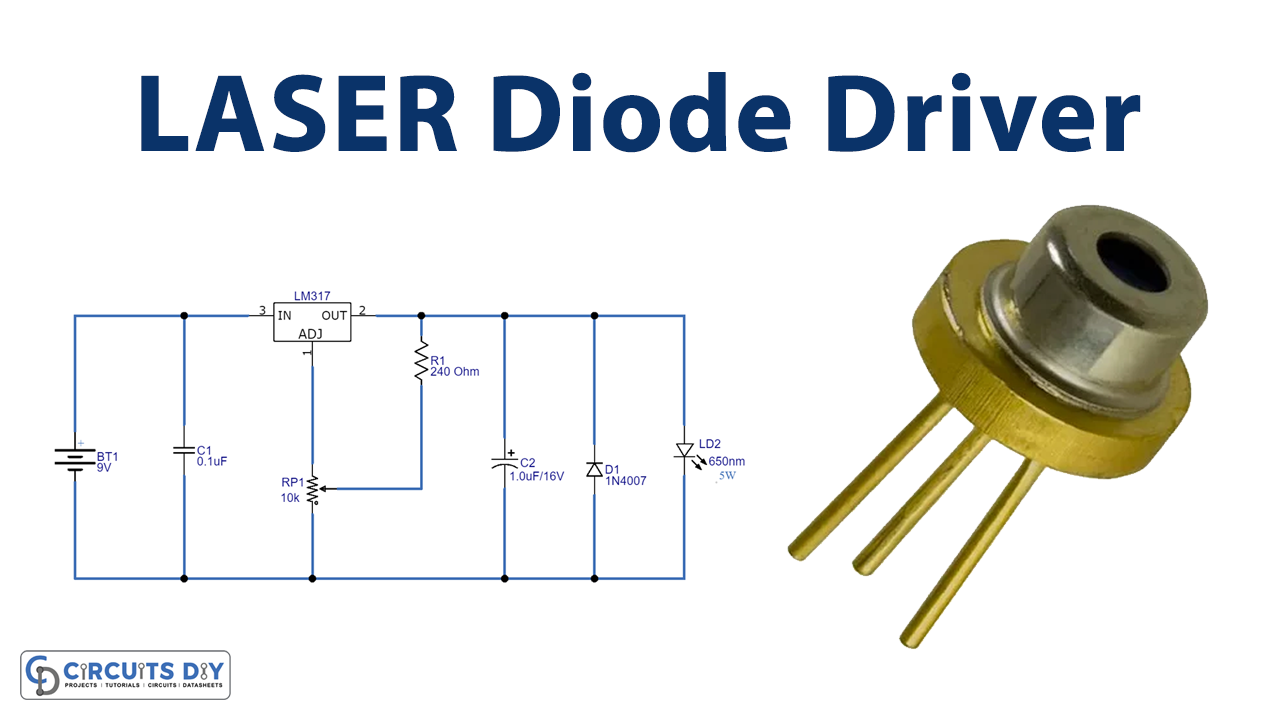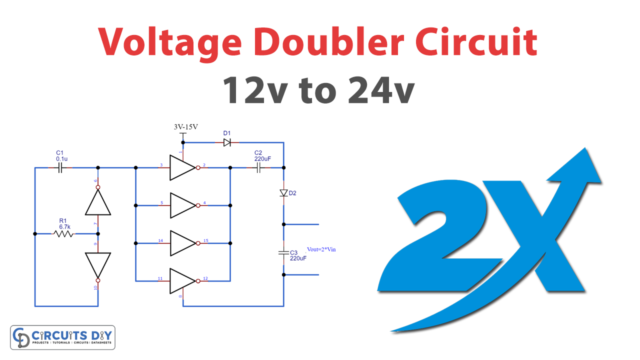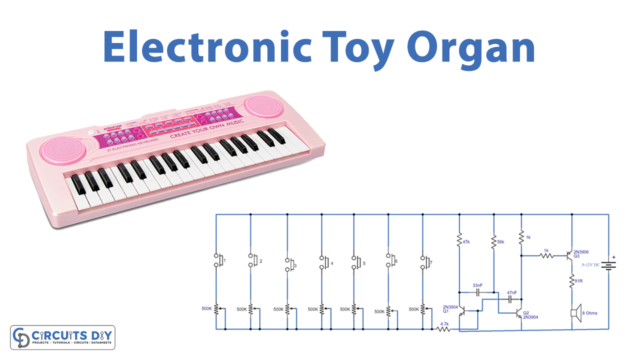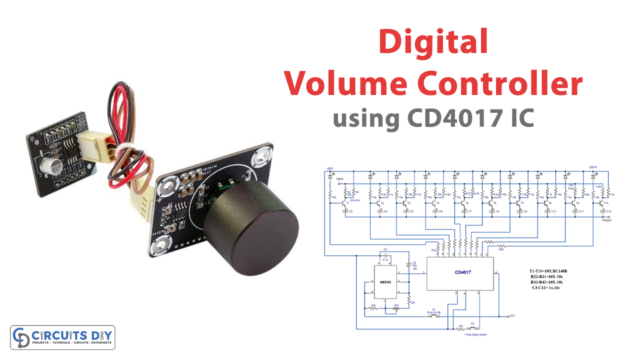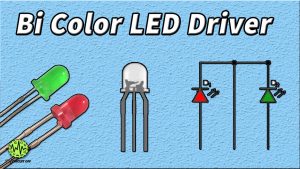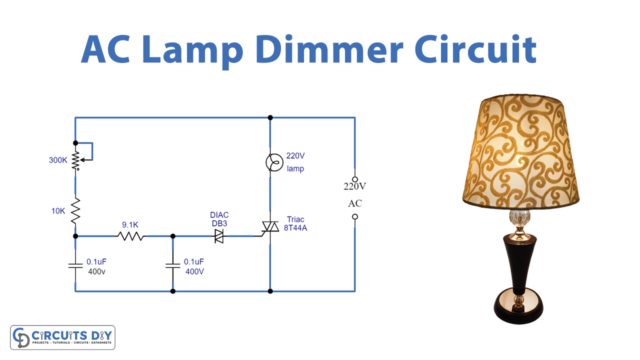In this tutorial, we are going to make a “LASER diode driver circuit”.
A LASER( Light Amplification by Stimulated Emission of Radiation) diode package comprises two semiconductors in one package. On the top part of a 2-pin Laser diode, you will find a P-type semiconductor. It has a wide range of materials such as Gallium Arsenide. Its fundamental role is to receive electrons. On the bottom of a laser diode package, there’s an N-type semiconductor. It comprises materials such as Gallium Arsenide & Selenium and has an extra electron. Hence, the two form a P-N junction. It is the basic laser diode driver source of light, and are widely used in different domain applications as it gives focused light ray in the visible spectrum. Since laser diodes will perform well only in regulated constant current, depends on the application laser chosen at different range nm (nanometer) wavelength and watts. Here we design a LASER diode driver circuit with adjustable voltage regulator LM317 to drive red color 650nm 50mW laser diode. The function of the Laser diode driver is to provide a constant current to the laser diode. This circuit is suitable for constant and continuous glowing of laser diode, we can adjust the intensity of light by this circuit. Basic Laser & higher-class lasers are dangerous to naked eyes and skin so do not expose them to their path.
Hardware Required
| S.no | Component | Value | Qty |
|---|---|---|---|
| 1. | Laser Diode | 650nm, 5mW | 1 |
| 2. | Regulator IC | LM317 | 1 |
| 3. | Capacitor | 0.1uF, 1uF/16V | 1, 1 |
| 4. | Variable Resistor | 10KΩ | 1 |
| 5. | Resistor | 240Ω | 1 |
| 6. | Diode | 1N4007 | 1 |
| 7. | Connecting Wires | – | – |
| 8. | Battery | 9V | 1 |
Circuit Diagram
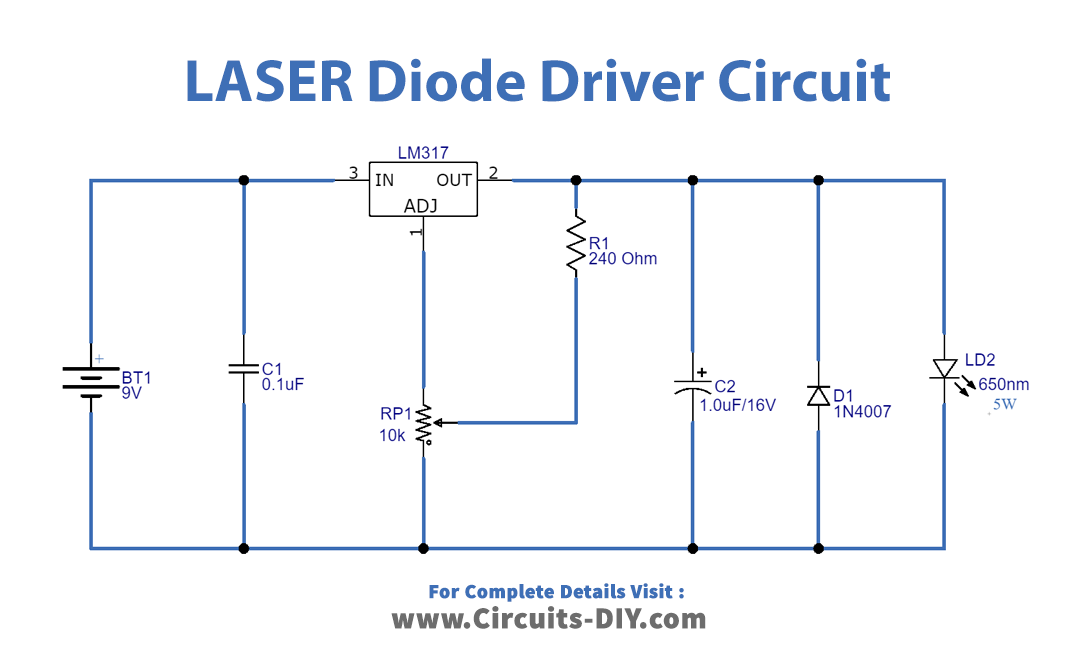
LASER Diode
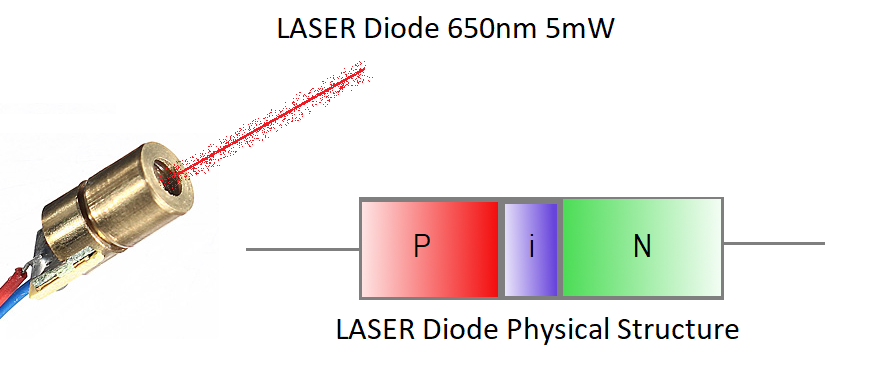
Laser diodes are generally consisting of two sand-witched semi-conductors, that is P-type semiconductor and an N-type semiconductor. These are separated by intrinsic material, which is the cause of the laser diode’s wavelength and color varies. The P-type layer is concentrated with majority holes & minority electrons then the N-type layer is concentrated with majority electrons & minority holes. When the actual laser diode current is flowing, electrons and holes will travel toward the P-N junction. Note that electrons are negatively charged while holes are positively charged. The combination of the holes and electrons will yield a photon on the connected laser diode. The diode lasers have to capture this photon and thus have a mirrored coating. The capture of the initial photon will encourage the combination of other holes and electrons. The result will be a yield of light photons. Here the creation of photons will not cease until the diode junction fills with light. Some high-power laser diodes are manufactured with a heat sink to avoid thermal runaway.
Working Explanation
As we can see circuit begins with filter capacitor C1 0.1uF and it is responsible for filtering high-frequency ripples in the DC supply. Then adjustable voltage regulator IC LM317 biased with the ground through variable resistor VR1 and the variable output terminal of VR1 is connected at the output pin of IC LM317 through R1 resistor. We can adjust the regulator ICs output voltage by changing the VR1 resistor. Here the capacitor C2 is placed to balance the output voltage given to the laser diode and D1 avoids reverse polarity bias to the Laser diode.
Now when we powered the circuit with a 9V battery, the output voltage is taken out from the Output PIN2, and this voltage is filtered out from the second capacitor (1uf). Then this regulated constant voltage and current reaches the laser diode and drives it to give maximum output. Here as capacitor C2 behaves as a power load balancer to filter the fluctuating signals. We can adjust the intensity of laser light by moving the VR1. Place the Laser diode in this circuit with caution to its polarity, wavelength, and power.
Applications
Can be used in industrial applications: engraving, cutting, scribing, drilling, welding, etc. And medical applications: to remove unwanted tissues, diagnostics of cancer cells using fluorescence, and dental medicine.
It is also useful for data storage, telecommunication, and military applications.


